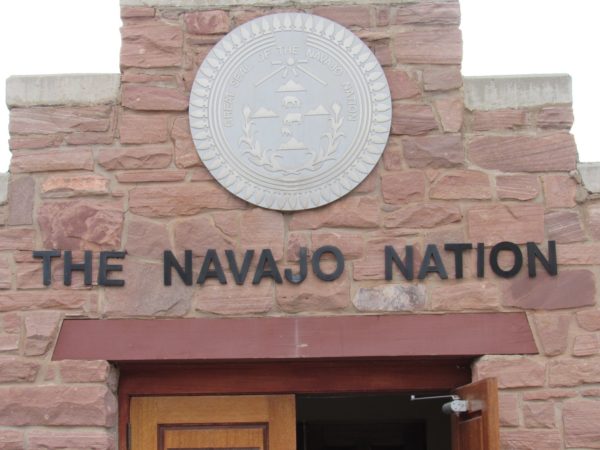
- Details
- By Native News Online Staff
WINDOW ROCK, Ariz. – On Wednesday, the Navajo Department of Health, in coordination with the Navajo Epidemiology Center and the Navajo Area Indian Health Service, reported 135 new COVID-19 positive cases for the Navajo Nation and eight more deaths. The total number of deaths is now 613 as of Wednesday. Reports indicate that 8,011 individuals have recovered from COVID-19, and 141,751 COVID-19 tests have been administered. The total number of positive COVID-19 cases is now 13,880.
Navajo Nation COVID-19 positive cases by Service Unit:
- Chinle Service Unit: 3,041
- Crownpoint Service Unit: 1,505
- Ft. Defiance Service Unit: 1,392
- Gallup Service Unit: 2,200
- Kayenta Service Unit: 1,533
- Shiprock Service Unit: 2,050
- Tuba City Service Unit: 1,449
- Winslow Service Unit: 701
* Nine residences with COVID-19 positive cases are not specific enough to place them accurately in a Service Unit.
The Navajo Nation’s three-week stay-at-home lockdown is in effect 24-hours a day, seven days a week with the exception of essential workers, cases of emergencies, and to purchase essential items such as food and medication when essential businesses are open from 7:00 a.m. to 3:00 p.m. daily. On Wednesday, the state of New Mexico reported a record-high 2,897 new cases of COVID-19, the state of Arizona reported 3,206 new cases, and Utah reported 3,071 cases.
“Unless you are an essential employee, or if you have an emergency, or are in immediate need of food or groceries or other essential items like medication, then you should be at home at all times. No one should be going into a store for a bag of chips or a soda and we shouldn’t be taking kids or our entire family into stores to shop – essential items only. We do not have the law enforcement resources to regulate the lockdown around the clock, and we shouldn’t have to. Everyone needs to take this growing pandemic seriously and hold themselves and your family members accountable. Unfortunately, too many people don’t take this virus seriously until it hits their own family. Over 160,000 new cases of COVID-19 cases were reported across the country today. The safest place to be is at home here on the Navajo Nation,” Navajo Nation President Jonathan Nez said.
All essential businesses are required to ensure employees and customers wear masks, practice social distancing, disinfect high-touch surfaces, access to hand wash stations, sanitizers and gloves, and limit the number of customers in any enclosed areas.
On Thursday, Nov. 19 at 6:00 p.m. (MST), the Nez-Lizer Administration will host an online town hall on the Nez-Lizer Facebook page to provide COVID-19 updates.
For more information, including helpful prevention tips, and resources to help stop the spread of COVID-19, visit the Navajo Department of Health's COVID-19 website: https://www.google.com/url?q=http://www.ndoh.navajo-nsn.gov/COVID-19&source=gmail&ust=1605841524461000&usg=AOvVaw3ujHwNxHqV-lp9quU4mFyC">http://www.ndoh.navajo-nsn.gov/COVID-19. For COVID-19 related questions and information, call (928) 871-7014.
More Stories Like This
Native News Weekly (August 25, 2024): D.C. BriefsUS Presidents in Their Own Words Concerning American Indians
Ethics Complaint Alleges Former Navajo Nation Chief of Staff Accepted Gifts From Contractor
Monday Morning (December 14, 2025): Articles You May Have Missed This Past Weekend
Senators Demand Accountability Amid Reports of ICE Questioning Native Americans
Help us defend tribal sovereignty.
At Native News Online, our mission is rooted in telling the stories that strengthen sovereignty and uplift Indigenous voices — not just at year’s end, but every single day.
Because of your generosity last year, we were able to keep our reporters on the ground in tribal communities, at national gatherings and in the halls of Congress — covering the issues that matter most to Indian Country: sovereignty, culture, education, health and economic opportunity.
That support sustained us through a tough year in 2025. Now, as we look to the year ahead, we need your help right now to ensure warrior journalism remains strong — reporting that defends tribal sovereignty, amplifies Native truth, and holds power accountable.
 The stakes couldn't be higher. Your support keeps Native voices heard, Native stories told and Native sovereignty defended.
The stakes couldn't be higher. Your support keeps Native voices heard, Native stories told and Native sovereignty defended.
Stand with Warrior Journalism today.
Levi Rickert (Potawatomi), Editor & Publisher

